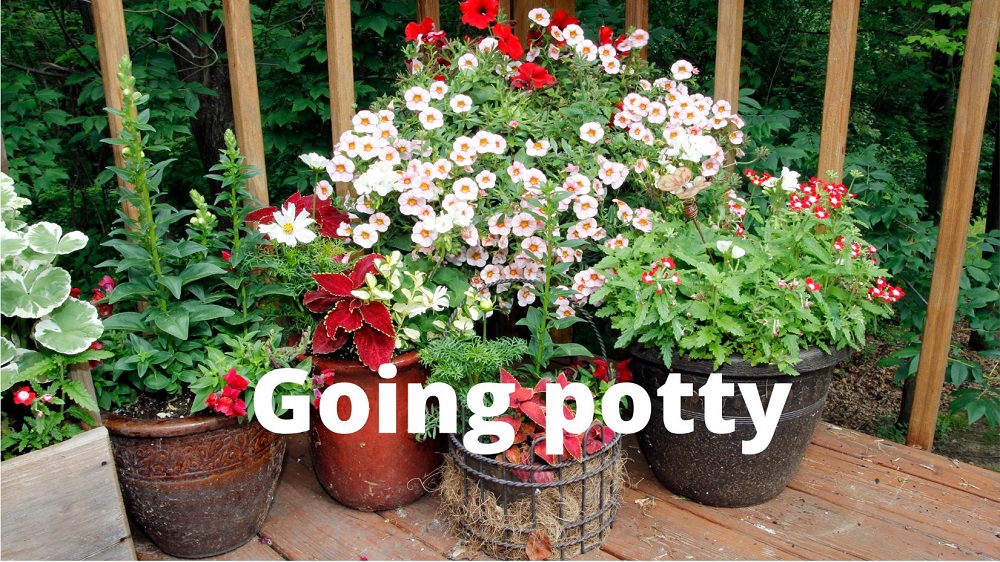Successful container gardening – Ask the Expert
25th Jul 2021
Container gardening is something must gardeners enjoy. Whether you have restricted space, are creating a feature for the patio or seating area, or planting containers around a gravelled drive or doorway growing plants in pots is a great way to enjoy beautiful flowers, shrubs and small trees.
The best news of all is that most of us, including even the greenest of new gardeners, can joy great results when growing plants in containers. To help you get the most from your container plants here are some common questions we get asked and our replies.
Can I use soil from the garden in my containers?
When gardening in containers, it is essential that you never take soil directly from the main garden and use it in the pots. While the soil may be healthy, there can be issues with the moisture levels. In short, as the soil dries out in the pots, it will become solid and hard.
Instead, we recommend using a good quality potting mix which has a good balance of important ingredients like compost, peat moss, vermiculite, rotted manure and perlite. Try to avoid being tempted by cheap potting mixes that won’t have the best ingredients.
Can I mix plants together?
You can of course mix plants but do make sure that all the plants in the container share the same characteristics. For example, don’t mix plants which need full sun with those that require shade.
When you buy plants, whether that be a flowering plant, a fruit tree or an ornamental tree, one of the first things you should be looking for is the label information on the plant’s needs. This will tell you a number of things including the type of light exposure the plant requires.
Subscribe to our newsletter for regular discounts and exclusive offers
Some like full sun whereas others prefer a mix of sun and shade. The last thing you want to do is mix plants that like sun in with those that like shade because you simply cannot place the container in both conditions and one plant will suffer.
How often should I water my container plants?
One of the biggest rookie mistakes you can make when starting a container garden is not to give the plants enough water. When planting in pots and containers, the plants will need watering much more frequently than those that are growing in the ground in your garden.
While every plant is different, one of the best ways to tell if they need more water is to check the surface of the soil; if it feels dry, add a little water. Hanging baskets are most in need of this so be sure to keep an eye on them.
The bottom line is to remember that container plants must be watered more regularly than ground plants. Especially during hot weather.
What kind of pots should I use?
There is a good degree of versatility when it comes to a container garden as there are a lot of options when it comes to pots. Terracotta pots are popular but since they dry out much more quickly, you will need to water more often; you can help the situation by soaking the pots before planting anything in them.
Alternatively, you might choose plastic pots or wooden ones, but do be sure that they contain drainage holes to prevent a build-up of water. Also ensure that the drainage holes are large enough as there is a risk of them becoming clogged with soil if they are too small.
We covered some of the alternatives that container gardeners may like to consider in this article.
Can I use fertiliser in my container plants/
Your container garden should thrive for the entire summer but this will only happen if you take excellent care of it. One of the best ways to ensure that your plants stay in the best condition for the whole season is to regularly fertilise them.
Now, this can be done in several ways. You may use a liquid fertiliser which can be added to the water you give to your plants. On the other hand, some people like to use a potting mix that contains a slow-release fertiliser.
That said, we would still advise using plant foods or liquid fertilisers alongside this for the best effect, especially for flowering plants.
Should I deadhead plants growing in pots?
Absolutely you should. Deadheading is a simple gardening process that will seriously benefit your plants in terms of their appearance. By removing the faded and old blooms found on perennial and annual plants, you will encourage new growth to come through.
Depending on the species, you may need to use different methods. For example, smaller flowers can simply be pinched away with the thumb and forefinger. However, larger plants like geraniums may need to be cut using pruning shears. If you have plants with very small flowers like the sweet asylum, you will need to prune back the entire plant.
What about winter?
During the summer months, your container garden will be vibrant and thriving. However, once winter comes, some of your plants will die and will need to be removed. These can be composted and this should be done at the first sign of a hard frost, the dates of which will vary across the country.
If you have ceramic pots, these may crack as they freeze and thaw so we would suggest bringing them inside for the winter. Perennials can be transferred into the main garden and should withstand the winter.
Click here to see our selection of plants which are ideal for container gardening.
Return to the Ask the Expert page for more gardening tips and advice.


